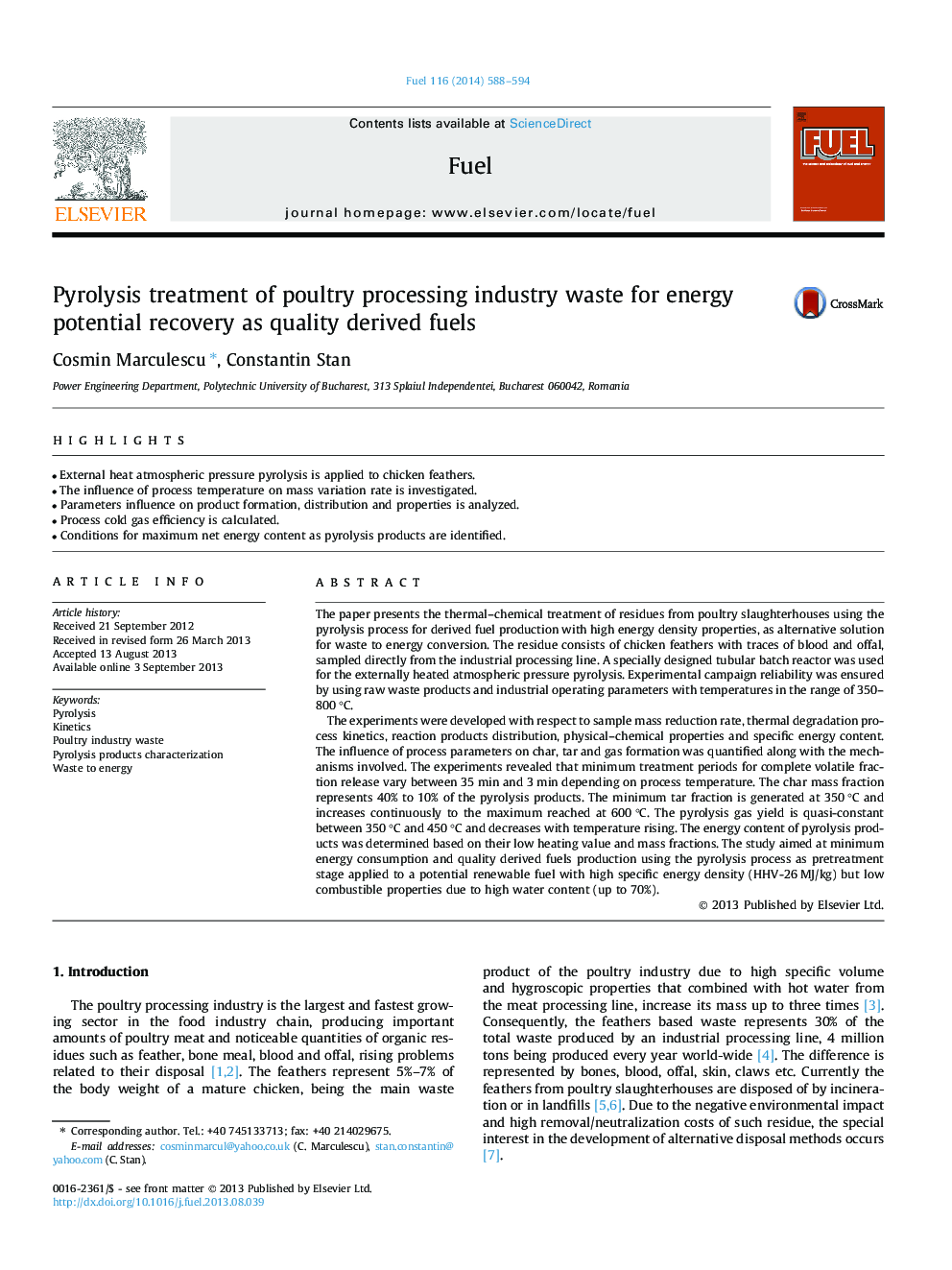| Article ID | Journal | Published Year | Pages | File Type |
|---|---|---|---|---|
| 6638945 | Fuel | 2014 | 7 Pages |
Abstract
The experiments were developed with respect to sample mass reduction rate, thermal degradation process kinetics, reaction products distribution, physical-chemical properties and specific energy content. The influence of process parameters on char, tar and gas formation was quantified along with the mechanisms involved. The experiments revealed that minimum treatment periods for complete volatile fraction release vary between 35 min and 3 min depending on process temperature. The char mass fraction represents 40% to 10% of the pyrolysis products. The minimum tar fraction is generated at 350 °C and increases continuously to the maximum reached at 600 °C. The pyrolysis gas yield is quasi-constant between 350 °C and 450 °C and decreases with temperature rising. The energy content of pyrolysis products was determined based on their low heating value and mass fractions. The study aimed at minimum energy consumption and quality derived fuels production using the pyrolysis process as pretreatment stage applied to a potential renewable fuel with high specific energy density (HHV-26 MJ/kg) but low combustible properties due to high water content (up to 70%).
Keywords
Related Topics
Physical Sciences and Engineering
Chemical Engineering
Chemical Engineering (General)
Authors
Cosmin Marculescu, Constantin Stan,
